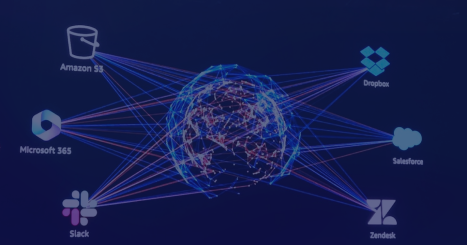In today’s hyperconnected business landscape, the marriage of Internet of Things (IoT) devices with machine learning (ML) algorithms is creating unprecedented opportunities for innovation and efficiency. This powerful combination transforms raw data into actionable intelligence, enabling organizations to predict outcomes, automate decisions, and discover insights impossible to detect with human analysis alone.
Understanding the partnership
The Internet of Things encompasses the vast network of physical devices embedded with sensors, software, and connectivity that enables them to collect and exchange data. From industrial equipment to consumer wearables, these devices generate massive amounts of information that would overwhelm traditional analysis methods.
This is where machine learning becomes essential. ML algorithms can process this torrent of data, identifying patterns, anomalies, and relationships that drive business value. When IoT provides the eyes and ears, machine learning provides the brain—creating systems that not only monitor but understand, predict, and adapt.
The Fundamental Differences
| FEATURE | INTERNET OF THINGS (IOT) | MACHINE LEARNING (ML) | COMBINED VALUE |
| Primary Function | Data collection through connected devices | Pattern recognition and prediction | Automated intelligence and optimization |
| Data Handling | Generates vast amounts of operational data | Consumes large datasets to train models | Continuous improvement through feedback loops |
| Decision Making | Limited to programmed rules | Learns from data to make flexible decisions | Autonomous systems that adapt to changing conditions |
| Business Impact | Visibility into operations | Insights from complex data | Predictive capabilities driving strategic advantage |
The synergy between these technologies creates a whole greater than the sum of its parts. IoT devices generate the rich, real-time data that machine learning algorithms need to become increasingly accurate, while ML provides the intelligence that makes IoT implementations truly valuable.
Transforming industries through intelligent IoT
The impact of this technological convergence extends across virtually every sector, though some industries are particularly well-positioned to benefit from early adoption.
Manufacturing: The Smart Factory
Manufacturing facilities were among the first to embrace IoT sensors for monitoring equipment. Now, they’re integrating machine learning to move from simple monitoring to predictive capabilities. Predictive maintenance algorithms analyze vibration patterns, temperature fluctuations, and other variables to identify potential failures before they occur.
A McKinsey study found that manufacturers implementing these technologies reported 10-15% increases in production efficiency and 4-5% improvements in EBITDA. The combination of sensor data with intelligent algorithms minimizes downtime, optimizes production scheduling, and ensures consistent quality control.
Urban Infrastructure: Smarter Cities
Municipal governments worldwide are deploying IoT networks to manage everything from traffic flow to energy usage. Dubai’s smart city initiative exemplifies how machine learning can transform this data into practical applications. Their network of edge AI devices monitors traffic patterns, automatically detecting incidents and optimizing signal timing without requiring constant human oversight.
The results are impressive: incident monitoring improved by 83%, emergency response times decreased by 30%, and overall journey times reduced by 20%. By processing data locally at the edge, these systems maintain privacy while enabling real-time decision making.
Healthcare: Predictive Patient Care
The Internet of Medical Things (IoMT) encompasses everything from wearable health monitors to hospital equipment. When combined with machine learning, these devices enable a shift from reactive to preventive healthcare.
Remote monitoring systems now analyze patient data to detect subtle changes that might indicate deteriorating conditions, allowing intervention before critical situations develop. ML algorithms can identify patterns across thousands of patients, helping medical professionals develop more effective treatment protocols tailored to specific patient profiles.

Case study
5 min to read
Building Scalable Data Architecture for IoT with AFT-Managed Landing Zones
From concept to deployment
Organizations looking to harness the power of IoT and machine learning should approach implementation strategically, following a structured methodology to maximize success.
Assessing opportunity areas
The first step involves identifying specific business challenges that could benefit from data-driven insights. Rather than implementing technology for its own sake, successful organizations focus on clear business outcomes, whether cost reduction, quality improvement, or enhanced customer experience.
Technical implementation framework
| IMPLEMENTATION PHASE | KEY ACTIVITIES | SUCCESS FACTORS | COMMON PITFALLS |
| Discovery | Assess existing infrastructure, identify data sources, define business goals | Clear executive sponsorship, cross-functional team | Technology-driven approach without business alignment |
| Pilot Deployment | Implement limited-scope project, establish metrics, validate approach | Focused use case, adequate data quality, realistic expectations | Attempting too much complexity in initial implementation |
| Scaling | Expand successful pilots, standardize approaches, build internal capabilities | Documented procedures, knowledge transfer, infrastructure planning | Underestimating integration complexity with legacy systems |
| Optimization | Refine algorithms, enhance data collection, automate processes | Continuous monitoring, regular retraining of models, feedback mechanisms | Failing to update models as conditions change |
Managing implementation challenges
Every organization faces unique challenges when implementing IoT-ML initiatives. However, several common hurdles deserve special consideration:
Data Quality and Volume
IoT sensors generate massive amounts of data, but quality issues can undermine ML effectiveness. Successful implementations include data governance frameworks that ensure consistency, completeness, and accuracy.
Security Concerns
Connected devices create new attack surfaces for potential security breaches. Comprehensive security strategies must address device authentication, data encryption, and ongoing vulnerability management.
Integration Complexity
Many organizations struggle to integrate IoT-ML systems with existing infrastructure. The most successful approaches involve phased implementation with careful attention to API management and data standardization.
The business value equation
The ultimate measure of success for any IoT-ML initiative is the business value it creates. Organizations should establish clear metrics aligned with strategic objectives before implementation begins.
ROI framework for IoT-ML initiatives
| VALUE CATEGORY | EXAMPLE METRICS | MEASUREMENT APPROACHES | TYPICAL TIMEFRAME |
| Operational Efficiency | Maintenance cost reduction, Equipment uptime improvement, Energy usage optimization | Comparative analysis (before/after), Control group testing | 6-12 months |
| Customer Experience | Personalization effectiveness, Response time improvement, Product quality metrics | Customer satisfaction surveys, Usage analytics, Defect rates | 3-9 months |
| New Revenue Streams | Subscription services adoption, Data monetization opportunities, New product development | Revenue attribution analysis, Market share metrics | 12-24 months |
| Risk Reduction | Downtime avoidance, Compliance violation reduction, Security incident prevention | Predictive model accuracy, Incident frequency comparison | 6-18 months |
What’s next for intelligent IoT
As organizations master current implementations, several emerging trends will shape the future of IoT and machine learning integration:
- Edge Intelligence
Processing will continue moving toward the edge, with more sophisticated ML capabilities running directly on IoT devices, reducing latency and bandwidth requirements. - Federated Learning
Privacy concerns are driving development of techniques that allow ML models to train across distributed devices without centralizing sensitive data. - Autonomous Systems
The combination of IoT sensors, ML intelligence, and automated controls is enabling fully autonomous systems that can operate independently with minimal human oversight. - Digital Twins
The creation of comprehensive digital replicas of physical systems allows for simulation, optimization, and testing without disrupting operations.
Conclusion: strategic imperative for competitive advantage
The integration of IoT and machine learning represents more than a technological upgrade—it’s a strategic imperative for organizations seeking competitive advantage. Those who successfully harness this powerful combination gain the ability to predict market shifts, optimize operations, enhance customer experiences, and develop innovative business models.
The most successful implementations share common characteristics: clear business alignment, phased deployment approaches, cross-functional teams, and robust security frameworks. By focusing on these elements, organizations can navigate the challenges of implementation while capturing the tremendous value these technologies offer.
As we move into an increasingly connected and data-driven future, the question is no longer whether to implement IoT and machine learning, but how quickly and effectively organizations can leverage these capabilities to transform their businesses.



